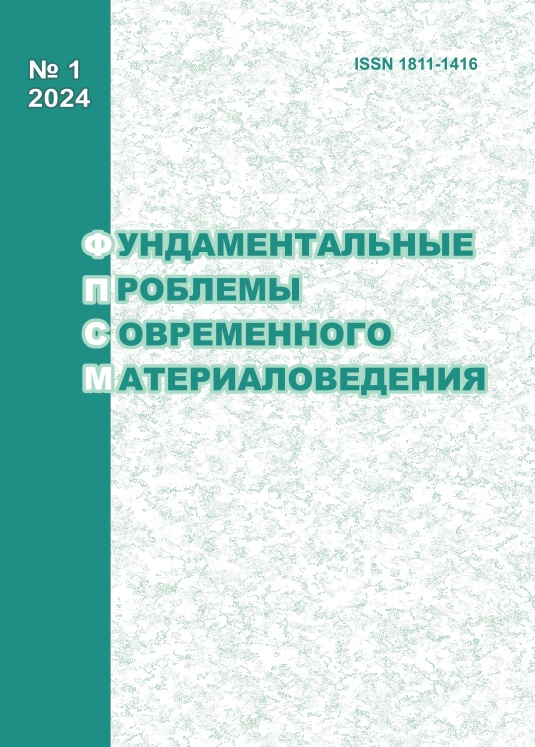EELECTRON-MICROSCOPIC INVESTIGATION OF THE STRUCTURE OF A SUBSTRATE-COATING CONTACT ZONE EXPOSED TO IRRADIATION WITH A PULSE ELECTRON BEAM
10.25712/ASTU.1811-1416.2024.01.001
Keywords:
contact zone, structure, high-entropy MnFeCoCrNi alloy, WAAM method (wire-arc additive manufacturing), 5083 aluminum alloy, pulsed electron beam, elemental and phase compositionAbstract
Using a WAAM-wire arc additive manufacturing method, a non-equiatomic Mn–Cr–Fe–Co–Ni high-entropy alloy (HEA) coating was formed on a 5083 aluminum alloy substrate. Using scanning and transmission electron microscopy, the analysis of the structure, phase and elemental composition of the contact zone after irradiation with low-energy electron beams with the following parameters: electron beam energy density 30 J/cm2, pulse duration 200 μs, number of pulses 3, pulse repetition rate 0.3 Hz was performed. The formation of a multiphase multi-element submicron-nanocrystal structure, formed mainly in the substrate, which has a lower melting temperature compared to HEA, has been revealed. It has been established that the contact layers adjacent to the substrate and coating have the structure of high-speed cellular crystallization. In the layer adjacent to the substrate, the cells are formed by a solid solution of magnesium in aluminum. Interlayers of the second phase, enriched by atoms of the coating and substrate, were revealed along the cell boundaries. In the layer adjacent to the coating, the cells are formed by an alloy of composition 0.17Mg–20.3Al–4.3Cr–16.7Fe–9.3Co–49.2Ni. Interlayers of the second phase, enriched mainly in magnesium and coating atoms, were revealed along the cell boundaries. The central region of the contact zone ~ 1700 µm thick is formed by lamellar crystallites; its main element is aluminum (≈ 77 at. %).











 Journal «Fundamental’nye problemy sovremennogo materialovedenia / Basic Problems of Material Science»
Journal «Fundamental’nye problemy sovremennogo materialovedenia / Basic Problems of Material Science» This work is licensed under a
This work is licensed under a 
